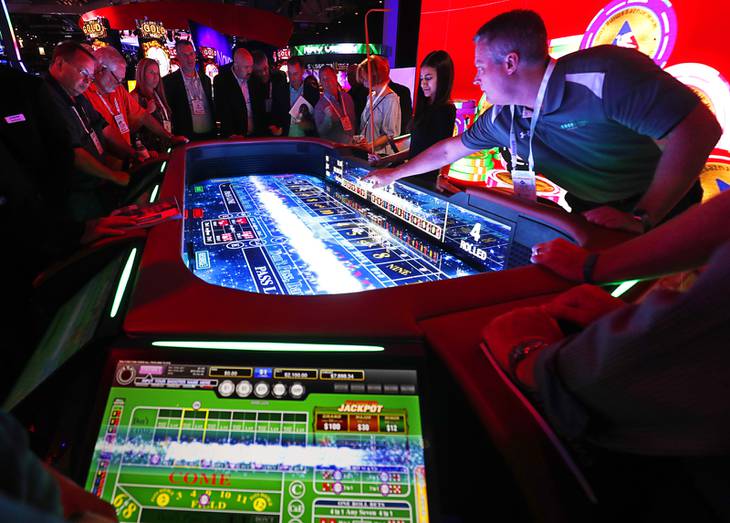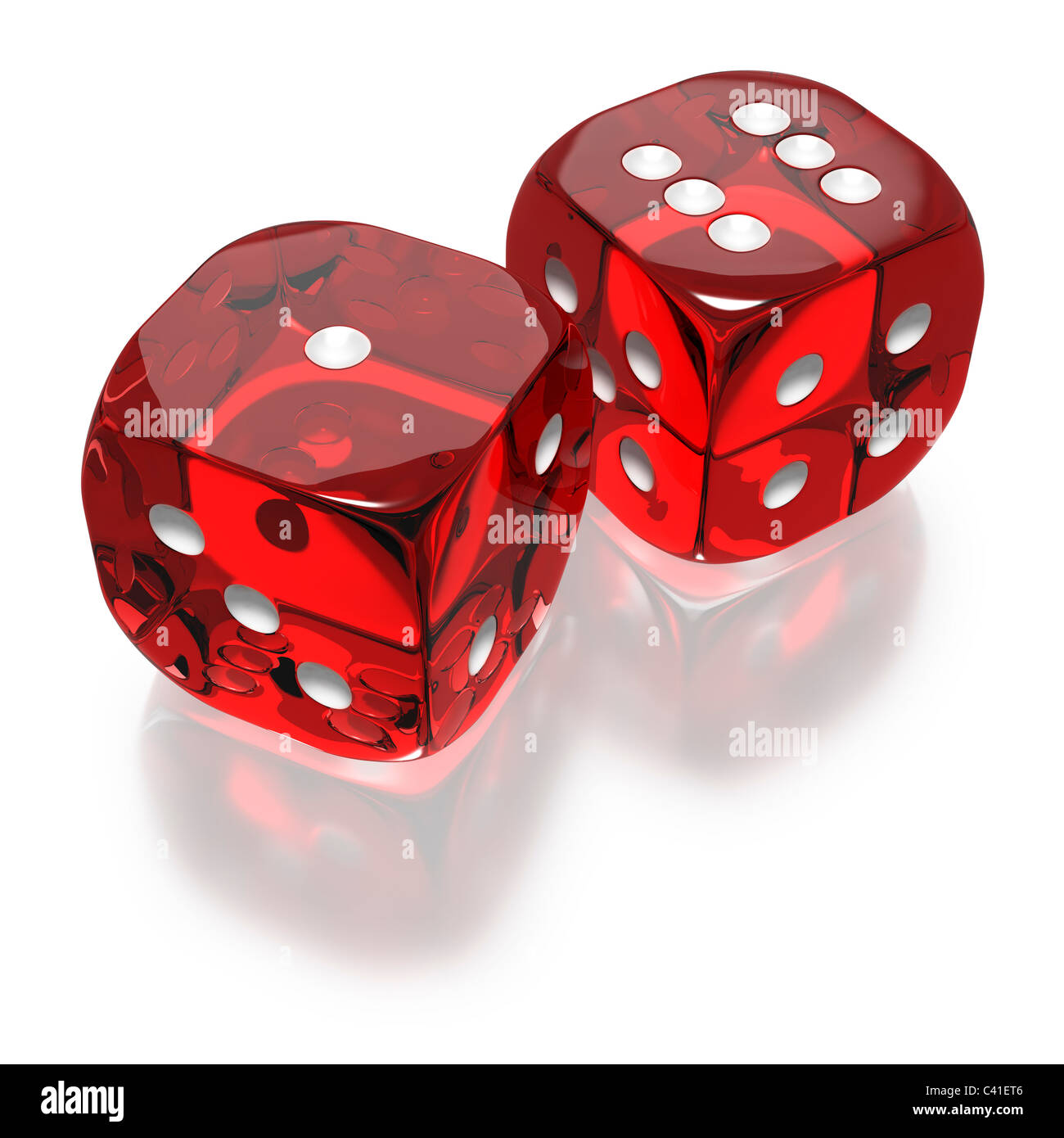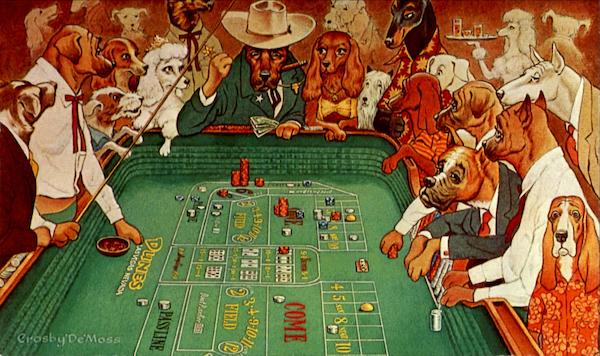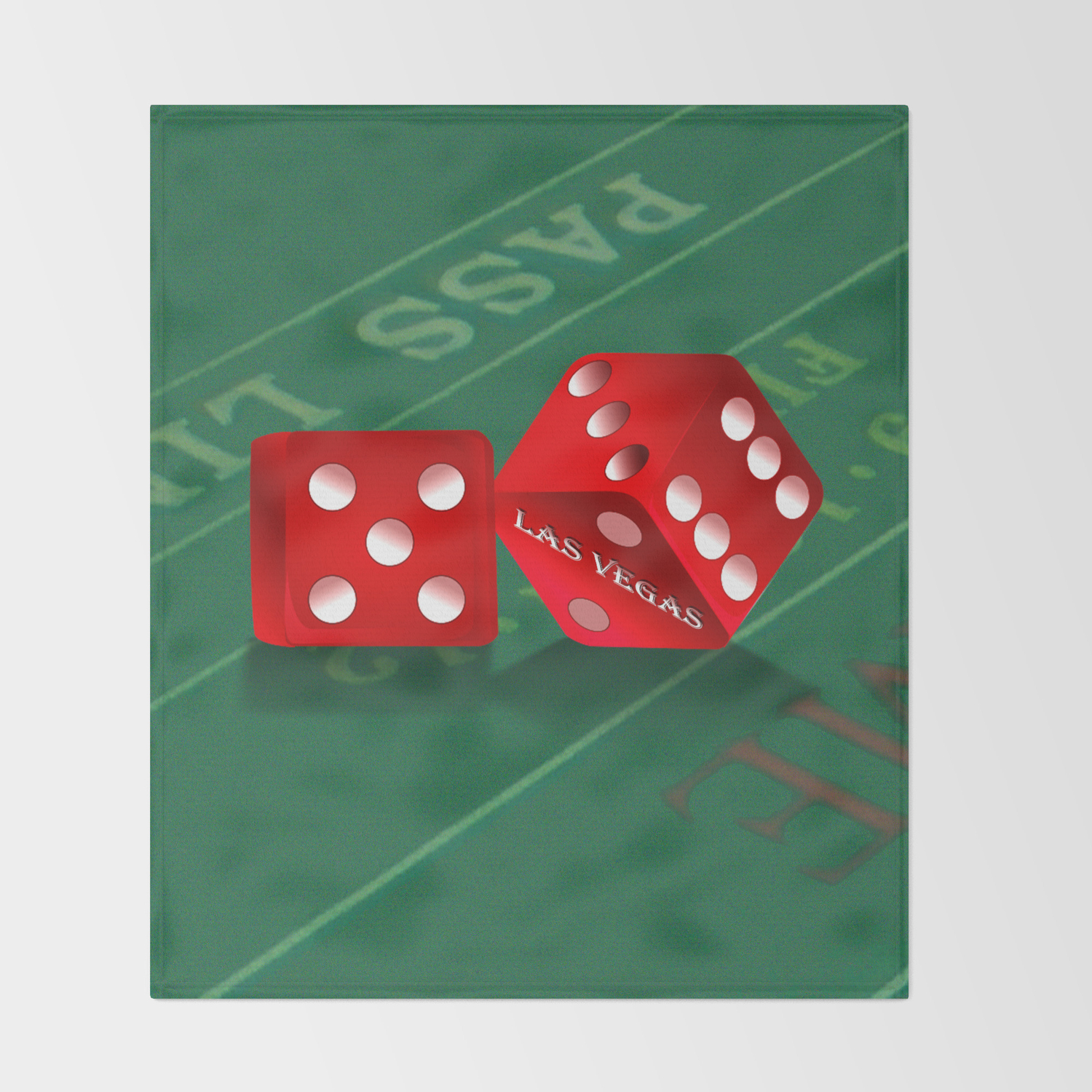How Roll Dice In Craps
Street craps, also called 'shooting dice,' is a simple gambling game that can be played wherever dice and a flat surface are at hand. Although a relative of the casino game craps, street craps is simpler and faster. Players bet on the likelihood of one player (the 'shooter') rolling a certain target number before they roll a 7 on two dice. In casinos, craps is played at a table, usually one covered in green felt. The bets available are labeled on the felt. The table is also the playing surface for the game – you roll the dice on the same table where you place your bets. Most of the best US casinos use a long table for craps – it’s 12 feet long, but it’s kind of.
Craps is always played with two dice, each of which is shaped like a cube less than an inch wide. Unlike the dice you’ll buy at your local game store for board games or RPGs, the dice used in craps have sharp edges and pointed corners. Craps dice are also bigger than the dice you’ll find in a game like Yahtzee or Monopoly. Most of the time. Craps is based around the pass line bet. This is the bet that the shooter (the one rolling the dice) wins after a round. First, each player places their bets by placing their chips on the pass line. Then the first roll takes place — the comeout roll.
Beginning gamblers often shy away from the craps table because the game looks complicated. It’s actually easy to play craps because the math keeps everyone honest. A rule of thumb to live by in any casino game is “the more they pay the less likely you are to win the bet”. Hence, there is no shame and a lot of wisdom in playing a conservative craps strategy. Here is a look at 12 secrets every craps player should learn to improve their game.
1. Why are Casino Dice Special?
Casinos use transparent dice because they hide no flaws. Opaque dice can be manufactured to varying standards and can hide balancing flaws. Unbalanced dice do not roll randomly.
And casinos replace their dice often. Casino dice have machine-tooled straight edges. These edges eventually wear down, accumulating imperfections. Imperfections add bias to rolls.
Casino dice are larger and straighter than board gaming dice because players must throw the dice so far on a craps table. The felt top and lining help the dice bounce more randomly than a smooth table top does.
So while you may be practicing your die throws at home, you’re not going to get the same action as at a casino, especially if you never replace your practice dice.
2. How the 5-Count System Works
Since 1994 craps players have debated whether the Captain’s 5-Count system is legit. This system tells you when to bet on a shooter other than yourself. Here are the 5 counts:
- Any point on the Come Out roll roll.
- Any good roll after the 1st Count roll.
- Any good roll after the 2nd Count roll.
- Any good roll after the 3rd Count roll.
- The first point rolled after the 4th Count roll.
You begin placing low bets on the shooter after he hits his 5th Count roll. If he never gets there then you never bet on that shooter. Never bet big on another shooter.
The 5-Count method reduces the number and size of bets you place on other shooters, thus reducing your overall risk. The downside of using the 5-Count method is that you watch more than play, but betting on a drunk guy to throw dice the way you want is a pretty risky bet.
3. You Can Stop the Game for a Dispute


Sometimes the dice roll funny, or maybe you’re not sure you were paid correctly. Before the dice are thrown again, if you are certain something is wrong, you can stop the game. You can ask the dealers to recount or reconsider or, if you disagree with their decisions, ask to speak to the pit boss. This is an option of last resort when you are sure you are right. Casinos want to keep the table in play and will work to resolve disputes quickly but they’ll also ask troublesome or argumentative players to leave.
Stopping play is a mix of courtesy, privilege, and right. It’s not a gambling strategy, at least not a winning one.
4. The More Bets You Place the Worse Your Chances of Winning
This is true in any table game, but some craps players love to place multiple bets. You’re taking on more risk, not spreading the risk, when you place several bets at the same time.
5. Know the Die Roll Probabilities
In a completely random game the chances of any given number on either die being rolled is 1 in 6. The chance of rolling any combination of numbers on the dice is 1 in 36. This “1 in 36” number can mislead you. There are only 11 possible values (2 through 12) that you can roll.
“7” is the most frequent die roll combination. There are 6 ways to roll a “7”. Some writers say there are three ways to roll a “7”: 1 and 6, 2 and 5, or 3 and 4. However, the math has to account for each die separately; hence, the probability of rolling a “7” in craps is 1 in 6.
In declining order of probability, the possible combinations in craps are:
- 7 (1 in 6)
- 6 or 8 (5 in 36)
- 5 or 9 (4 in 36)
- 4 or 10 (3 in 36)
- 3 or 11 (2 in 36)
- 2 or 12 (1 in 36)
How Best To Roll Dice In Craps
6. The “Pass” Bet is More Likely to Pay on Come Out than the “Don’t Pass” Bet
Both Pass and Don’t Pass pay even money so you can bet either way. Still, when you look at the probability table above, the shooter has 8 chances in 36 of rolling 7 or 11 on the Come Out roll and 3 chances in 36 of rolling a 2 or 3. If you are just hoping to win on the Come Out roll, go with the “Pass” bet.
7. The 6 and 8 Points Pay the Most over Time
The 6:5 odds for the 6 and 8 points are the worst and the 2:1 odds for the 4 and 10 points are the best. But the probabilities are best for the 6 and 8 and worst for the 4 and 10.
The premium on a 6:5 payoff for 6 or 8 is 20% over your bet. The premium on a 3:2 payoff for a 5 or 9 is 50% of your bet. The premium on a 2:1 payoff for a 4 or 10 is 100% of your bet. In a perfect distribution of 36 die rolls your expected total premiums are:
- 5 * 20% = 100% (betting on 6 or 8)
- 4 * 50% = 200% (betting on 5 or 9)
- 3 * 100% = 300% (betting on 4 or 10)
Although the 300% ROI for 4/10 looks great there is a slight edge for 6/8 bettors. Because you are losing all those other bets, you lose the least amount of money with the 6/8 points. Note also that multiplying (bets + premiums) by expected wins across the board results in a 600% return. The distribution with the fewest losses is the way to bet.
8. The More Complicated Your Strategy the More Risk You Take
The more you have to think about where your money goes, the odds and probabilities, and when you can bet, the more likely you will make a mistake. High risk strategies pay off less often than low risk strategies. Most experts agree that the long, slow game works best in craps, especially for non-expert players. Keep your money on the Pass Line until you’re way ahead.
9. Avoid Hedge Bets
Ignore dealer calls for “any craps” bets. Your expected return declines your risk grows when you hedge bets. “Any craps” betting is a bet on a bet. This just adds conditions to your Pass Line bet. The strategic way to gamble is to minimize risk while maximizing potential return on bet. The house will drain your bankroll any way it can and hedge bets are a favored gimmick.
10. Use the Tower of Hanoi Method to Manage Your Betting
How To Roll Dice In Craps
The Tower of Hanoi is a math puzzle about moving stacks of disks among three pegs. You can never place a disk on a smaller disk. The Tower of Hanoi rule assumes you are willing to lose everything in your bankroll. To conserve your money and manage risk, begin by making minimum bets. Increase your bets only when your bankroll is above its starting value.
Many craps players only risk 5% of their stakes on any bet. The 5% method works well enough but you’ll eventually run into the table minimum. The Tower of Hanoi method starts with the minimum bet as a floor, not 5%. As long as your bankroll is growing you can increase your bets toward the table maximum.
11. Never Return to Your Starting Stake
Let’s say your betting strategies have paid off enough that you have doubled your money. Once you reach that goal you should set a new floor. Walk away from the table if your stake drops to 150% of your original bankroll. This way you walk away a winner.
But there is another reason to do this. If you play any game too long you become tired, especially if you have been drinking. Your decision-making suffers when you are tired. Take “winner’s breaks” as often as possible so that you can give your brain a chance to rest.

12. The House Edge is not Determined by the Odds
Some gamblers assume the house loses more money on the basis of the odds on a given bet. It doesn’t work that way. The game is designed to pay about the same over time on any basic bet but to dilute your return with extra bets. In other words, the house edge is determined by the math behind the game. The odds are just what they are willing to pay you to maintain that edge over time.

Conclusion
Craps is a fine game for any gambler who enjoys taking risks, but you do need to understand the game. Fortunately, craps is designed for players of all experience levels. You don’t have to play all the different types of bets. And isn’t it interesting that the best strategies favor beginner-level bets anyway?
Please enable JavaScript to view the comments powered by Disqus.Craps is a dice game that involves predicting the outcome of the roll of dice and betting on the same. Most casinos also allow players to roll the dice when it is their turn. A player can choose either to roll or to pass his move by offering the dice to the next player in the rotation. However, it is often recommended that when a player is given the chance to roll the dice, he should take it. It not only gives you a control over the game but also the power to change it.
Even though the occurrence of numbers in a dice roll is completely a matter of chance, you should still know how to shoot dice properly if you want to increase the probability of getting your desired sum. Here’s how to shoot dice in a craps table game.
Types of bets in craps
Before you actually start shooting dice in a real casino, you should practice some at home. This is especially important for beginners. First of all, you should learn all the rules of playing a dice and of the pass line. The pass line bet is the most common in craps game and its outcome decides how the dice will be passed around the table.
Playing a pass line bet
This is the first bet played in the game of craps. It starts with a comeout roll. The bets are placed before the comeout by the players by placing chips in the area marked “pass line.” The current shooter makes the pass bet. If he doesn’t want to bet on the pass, the next player becomes the shooter and makes the pass bet. After that, the comeout roll takes place.
Based on the outcome of the comeout roll, the pass bettors win or loss or take specific actions.
Free odds bet: Free odds can be placed by a bettor to back his pass or come bet. These are paid at true odds since casinos do not take a portion of it.
Don’t pass or don’t come bet: It is opposite of pass and come bets used by don’t bettors.
Place bets: These bets do not involve the comeout. You win based on whichever number you choose to bet on.
Lay odds: These are used by don’t bettors to lay the odds.
Dice Shooting related terminologies (vocabulary)
If you are looking to shoot better dice in craps, you should definitely get yourself familiar with the following terminologies.
- Shooter: the player who has to roll the dice.
- Comeout: The first roll of a pass bet round.
- Pass: The pass line is the region between two lines that extend throughout the table. Pass bets are placed in that area.
- Craps: The rolling of 2, 3 or 12 is called craps.
- Point: The comeout roll of 5. 6. 7, 8, 9 or 10
- Seven Out: When a 7 occurs before the point is repeated, the pass bettors lose. It is called seven out.

How to shoot dice in a casino
Now that you know everything there is know about the game, let’s learn to shoot the best dice in the game of craps.
Becoming a shooter
The shooter position is offered to the next player (clockwise) around the table when the current shooter sevens out. It comes to you when it is your turn to shoot. The dice are given to the shooter by the stickman. You may choose any two dice from the available options, although all dice are identical.
Shooting the dice
When you become the shooter, the next thing you need to do is make a pass bet. Once you do that, you can roll the dice. The dice must be rolled toward the other end of the table and far from your end. It should be as random as possible and must not be rigged anyhow.
It is important to obey the table rules when shooting the dice. In order to make money at craps, you need to roll fewer 7s than usual to make more points before seven-out. It is even more important for players who are backing their pass bets with free odds as they can make big wins only by making points, which cannot be done if you keep getting 7 on the roll.
Dice Control Technique to shoot dice
Dice control technique is used by many professional craps players to successfully control the rolling of their dice. However, it is not actually possible to control the outcomes of a dice roll, you can only limit it to a certain extent. That is what this technique is all about. Another thing to note is that it is a physical skill and not something that everyone can do. Here are some tips to get better at it.
1. Set the dice such that a 3 face is on top of both dice and the diagonal lines formed by these 3 spots are parallel on two dice. However, other players might not wait for you while you set your dice so be fast in finding the right faces to put on top.
2. Put the dice between your forefinger and thumb.
3. Release the dice in an arc shape by swinging your arm in a pendulum motion. Avoid putting any spin on the dice so that it doesn’t make many rotations in the air. Throw such that the dice stay as together as possible before they touch the surface of the table.
4. The dice must hit the opposite wall and drop on the table.
The idea is to make the dice stop quickly without making too many bounces. Practice this technique as much as you can at home before trying it in an actual casino.